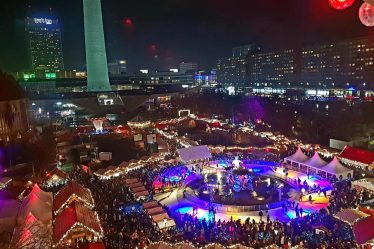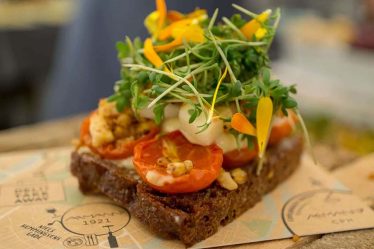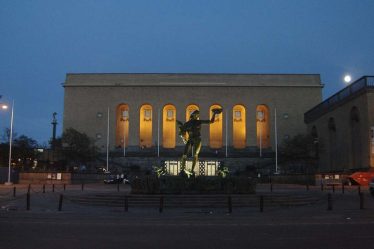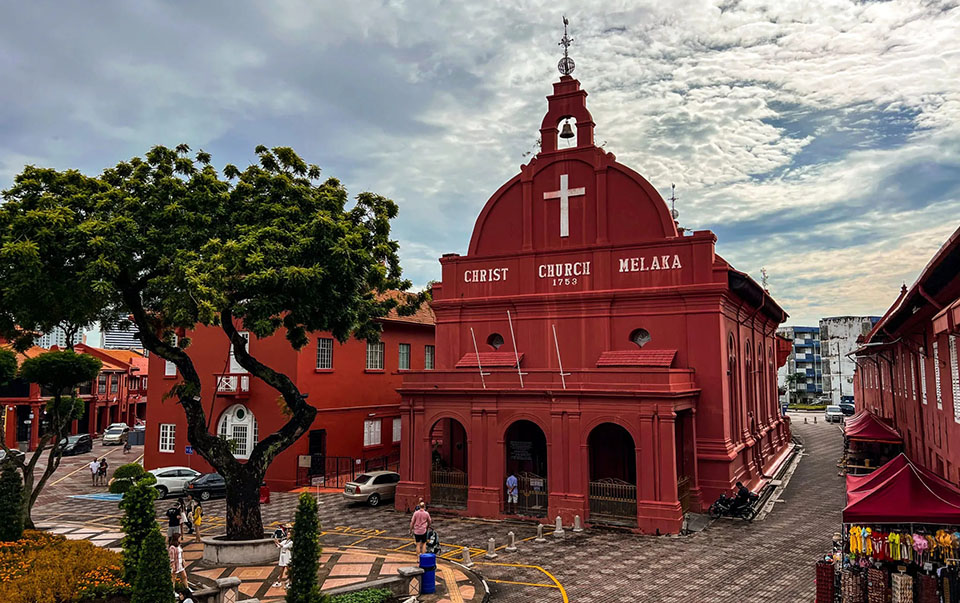
In September, I had the pleasure of exploring Malacca, a city steeped in colonial history and vibrant culture. From its charming colonial buildings and bustling night markets to the stunning Masjid Selat Melaka (Floating Mosque), Malacca offers a rich tapestry of experiences. Here’s a comprehensive guide to help you make the most of your visit to this fascinating city.
Malacca: A Charming Village Feel
Malacca, with its rich history and unique charm, feels almost like a quaint village despite its historical significance. Its compact size means that it’s easy to navigate and discover its many treasures. The city’s atmosphere is relaxed and welcoming, making it a perfect destination for a leisurely exploration.
Exploring Malacca’s Historic Streets
My journey began in the historic streets of Malacca. The architecture here is a wonderful blend of colonial styles, including the Dutch Red Square and various British-era buildings. Each structure tells its own story, and walking through these streets felt like stepping back in time. The preservation of these buildings allows visitors to experience the historical richness of Malacca firsthand.
Strolling Along the Malacca River
The Malacca River is a central feature of the city, providing a picturesque setting for a leisurely stroll. Walking along the river, I enjoyed the scenic views of both historic and modern architecture lining the banks. The riverside promenade is ideal for walking or cycling, with plenty of cafes and restaurants where you can sit and enjoy the tranquil surroundings.
Riverside Views
Along the river, I discovered several charming cafes and eateries. Sitting by the riverside and enjoying local delicacies, especially during sunset, was a highlight of my visit. The reflection of the setting sun on the water created a beautiful and serene scene, perfect for relaxation and reflection.
Malacca Night Market: A Vibrant Street Festival
One of the highlights of my trip was visiting the Malacca Night Market. The market is a vibrant display of local life, with a variety of food stalls offering everything from traditional Malaccan dishes to international fast food.
Market Experience
The night market was bustling with activity, and the range of food available was impressive. I sampled fried chicken, seafood barbecue, and various local snacks, each offering a unique taste of Malaccan cuisine. The lively atmosphere and diverse food options made the night market a must-visit experience.
The Enchanting Trishaws of Malacca
Another unique aspect of Malacca is its colorful trishaws, which are both a fun and distinctive way to explore the city. These trishaws are elaborately decorated with bright colors and lights, making them a popular choice for tourists.
Trishaw Tour
Riding on one of these trishaws, adorned with flowers and twinkling lights, was a delightful experience. The drivers play cheerful music, adding to the enjoyment of the tour. This unique form of transportation offered a fun and memorable way to see the city’s sights.
Colonial History of Malacca: A Journey Through Time
Malacca’s colonial past is evident throughout the city, with several notable historical sites that provide insight into its rich heritage.
1. The Dutch Red Square (Stadthuys)
Historical Significance:
The Dutch Red Square, or Stadthuys, is a prominent landmark in Malacca that reflects the city’s colonial past. Originally constructed in the 1650s, this building served as the residence of the Dutch Governor during their rule over Malacca. Its historical importance lies in its role as the administrative and political center of Dutch Malacca.
Architecture:
The Stadthuys is renowned for its striking red facade, which is a hallmark of Dutch colonial architecture. The building’s vibrant color, coupled with its white-framed windows and doors, makes it one of the most recognizable landmarks in Malacca. The architecture is characterized by its simplicity and symmetry, reflecting Dutch design principles.
Museum and Exhibits:
Today, the Stadthuys functions as a museum, showcasing a diverse collection of artifacts from the Dutch colonial era. The museum’s exhibits include historical maps, old photographs, traditional costumes, and various relics that offer insight into the daily life and governance of the Dutch period. Visitors can explore the museum to gain a deeper understanding of Malacca’s colonial history.
Visitor Experience:
As a visitor, you’ll find the Stadthuys to be a fascinating glimpse into Malacca’s past. The museum provides informative displays that detail the Dutch influence on the city’s development. The building itself, with its historical significance and picturesque setting, is a must-see attraction for anyone interested in colonial history.
2. St. Paul’s Hill (St. Paul’s Church)
Historical Context:
St. Paul’s Hill, also known as Bukit St. Paul, is a historical site that offers a fascinating look into Malacca’s Portuguese colonial period. The hill features the ruins of a Portuguese church originally built in 1521 by the Portuguese conquerors. It was one of the earliest Christian churches in Southeast Asia and served as a major religious center during the Portuguese era.
Architectural Features:
The church, dedicated to St. Paul, was constructed in the Gothic architectural style, although much of its original design has been altered over the centuries. The remaining structure includes the church’s walls and a few columns, giving visitors a sense of the building’s former grandeur. The site also houses a small chapel and various tombstones of Portuguese nobles.
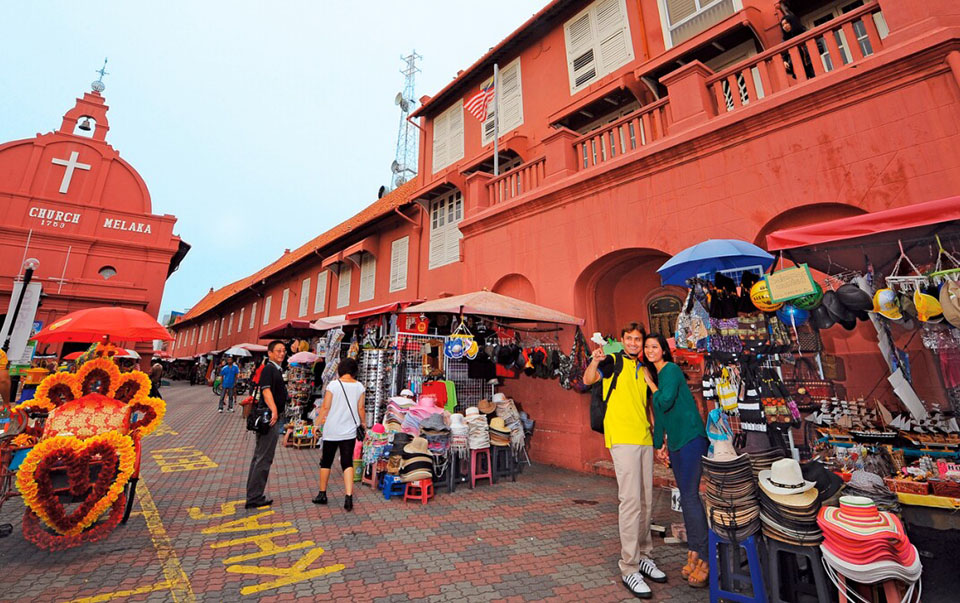
Panoramic Views:
One of the highlights of St. Paul’s Hill is the stunning panoramic view it offers. From the hilltop, visitors can enjoy a breathtaking view of Malacca’s cityscape and harbor. The elevated vantage point provides an excellent opportunity for photography and reflection on the city’s historical evolution.
Visitor Experience:
Walking up to St. Paul’s Hill is a rewarding experience, both historically and visually. The site provides a quiet and contemplative atmosphere where you can imagine the church’s historical significance while enjoying the scenic views of Malacca. It’s an ideal spot for those interested in both history and natural beauty.
3. The Old Courthouse
Historical Significance:
The Old Courthouse, located in the heart of Malacca’s historical district, is another important colonial-era building. Originally constructed by the British in the 19th century, the courthouse served as the administrative center for British governance in Malacca. It played a key role in the city’s legal and political life during the colonial period.
Architectural Style:
The Old Courthouse features classic British colonial architecture, characterized by its imposing structure and formal design. The building’s architecture includes features such as large verandas, high ceilings, and elegant columns. Its design reflects the British emphasis on functionality and grandeur in colonial buildings.
Current Use:
Today, the Old Courthouse functions as a museum and cultural center. It houses exhibits related to Malacca’s British colonial history, including legal documents, historical photographs, and artifacts from the colonial era. The museum offers visitors a glimpse into the administrative and judicial aspects of British Malacca.
Visitor Experience:
Visiting the Old Courthouse allows you to explore the city’s British colonial past in an environment that reflects the era’s architectural and administrative practices. The museum’s exhibits provide context and detail about the role of the courthouse in Malacca’s history, making it an enriching experience for history enthusiasts.
Chinese Influence: A Rich Cultural Blend
Malacca has a significant Chinese influence, which is evident in various aspects of the city. The Chinese community has played a crucial role in shaping the city’s culture and architecture.
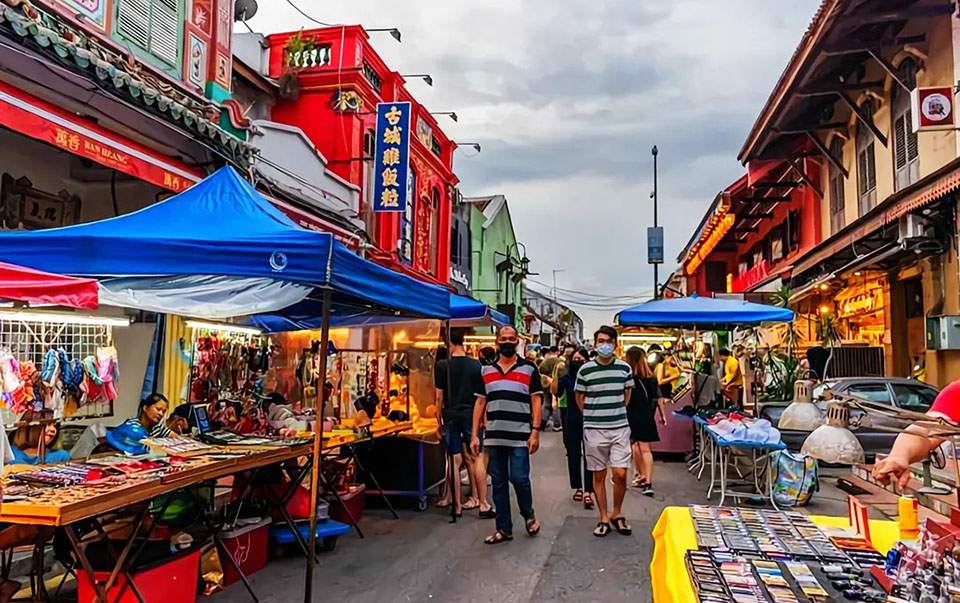
1. Jonker Street
Jonker Street is a vibrant area known for its Chinese heritage. The street is lined with traditional Chinese architecture and offers a range of souvenirs and local crafts. During festivals, the area comes alive with cultural celebrations, showcasing the rich Chinese traditions of Malacca.
2. Malacca Chinese Town
In Malacca’s Chinese Town, I explored traditional Chinese buildings and temples. These sites reflect the deep-rooted Chinese culture in the city and often host cultural events and activities that highlight the unique aspects of Malaccan Chinese heritage.
Masjid Selat Melaka: The Floating Mosque
One of the most stunning landmarks in Malacca is Masjid Selat Melaka, commonly known as the Floating Mosque. This mosque, built on the water, creates a dramatic and beautiful sight, especially at sunset.
Visit Experience
I visited the mosque during the late afternoon, and the sight of the mosque bathed in the golden light of the setting sun was truly breathtaking. The mosque’s elegant design and serene setting make it a significant cultural and religious landmark. When visiting, it’s important to respect local customs and dress codes to honor the cultural and religious significance of the site.
Malacca, with its blend of colonial history, vibrant markets, and stunning landmarks like the Floating Mosque, left a lasting impression on me. The city’s rich historical background, combined with its lively street scenes and unique cultural experiences, made my visit truly memorable. I hope this guide helps you plan your trip and experience the unique charm of Malacca for yourself.
